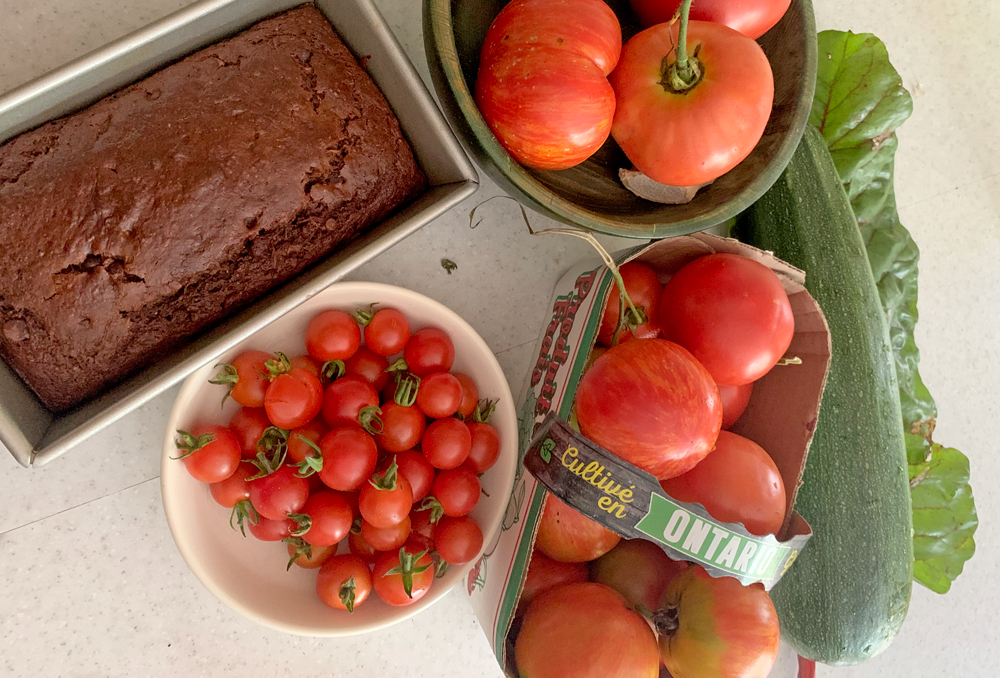GUELPH – The average family can expect to pay just over $800 more for food in 2025. That’s one prediction of the 2025 Canada Food Price Report, which was released earlier this month.
“Depending on the makeup … the average family of four can expect to pay $801.56 more than last year,” said James Requeima, a postdoctoral fellow at the University of Toronto’s Vector Institute who was part of a University of Guelph team that contributed to the report.
“Our team was very machine-learning focused.”
Led by U of G engineering professor Graham Taylor, the Machine Learning Research Group has helped forecast food prices for the report for the past six years, and this year, the team incorporated large language models (LLMs) in the process.
LLMs are artificial intelligence systems capable of understanding and generating human language, and processing large amounts of data.
“LLMs can read the whole internet and unlock that knowledge to guide our predictions, potentially offering a better forecast than a person or traditional statistical model,” Taylor stated in a U of G news release.
“These systems are able to take in extremely large data sets,” Requeima told the Advertiser.
But he also noted the report is produced by a multi-university team that includes human experts, too.
“It’s often better to use a combination,” he said, noting it seems the result is a reasonably accurate prediction.
Last year’s report predicted food prices would increase by between 2.5 and 4.5 per cent in 2024.
According to a Dalhousie news release, the current rate is 2.8%.
“We were pretty happy with the way the report panned out last year,” said Requeima. “We were right in our target range.”
This year’s report is predicting an increase of between 3 and 5%. This is based on a family with particular demographic makeup, which the report breaks down, Requeima said.
That family includes a man between the ages of 31 and 50, a woman in the same age range, a boy aged 14 to 18, and a girl between the ages of nine and 13.
That family would have spent $16,032 on food in 2024, and at the high end of the predicted increase, the same family is expected to spend $16,833 in 2025.
The report further breaks down the expected increase into categories, providing an idea of which foods are going to increase the most.
“The lowest increases we’re going to see this year are fruits and seafood,” said Requeima.
Those two categories are expected to increase between 1% and 3%. At the other end of the scale, meat is expected to see the largest increase, at 4 to 6%.
Bakery items, dairy and a category the report labels as “other” are expected to increase 2 to 4%, while vegetables are predicted to go up by 3 to 5%.
Requeima said the prices on which the report is based come from Statistics Canada, and it’s possible individual items are left out.
He also noted that while there is a range in predicted levels of increase across the various categories, there is no expectation that prices will go down.
“It’s very unlikely for them to ever come back down, but hopefully they’re increasing at a lower rate,” he said.
Factors driving increases include things like climate change, labour shortages, new policies, geopolitical conflicts, exchange and interest rates, consumer trends, and consumer debt and disposable income.
“These variables play a pivotal role in shaping the projected food prices for Canada in 2025,” the report states.
Speaking of the projected increase for meat prices, Requeima pointed out that the increase doesn’t necessarily translate into more money for farmers, but may actually be driven by a trend that is seeing fewer farmers raising beef.
“It’s a bit of a chicken-egg thing,” he said. “A lot of cattle farmers are switching because the margins are not what they used to be.”
One way people can respond to the price increase is to be “flexible” about their protein choices, Requeima said. If meat prices increase significantly, but seafood prices do not, some people may opt to switch, he said.
The report notes that “51% of Canadians have changed their spending habits to make ends meet,” he said, adding that “28% of Canadians have actually said that they’re eating less in an effort to save money.”
While the report gives a predicted amount for an “average” family of four, it also breaks down the predicted cost of feeding individuals, so families can find a more accurate prediction based on their particular demographics.
Not surprisingly, food spending is expected to be highest for boys aged 14 to 18 years at $4,810 for the year. Kids aged one to three are predicted to cost the least at $2,440.
“These calculations assume that Canadians are exclusively preparing and consuming meals at home,” the report states, highlighting one of its limitations.
But Requeima hopes the AI technology used in the predictions could eventually be used by the public to improve their lives.
“I’m particularly excited about using these new technologies to forecast things that affect the everyday lives of Canadians,” he said, noting he has used LLMs in projects related to weather and medical data, as well.
He envisions a scenario where individuals might be able to use the technology to do things like predict the best time to sell their home or to stock up on peanut butter.
“Forecasting is a really tough problem, and at the moment, it’s only accessible to researchers,” he said.



